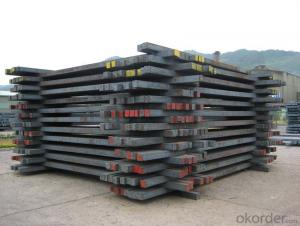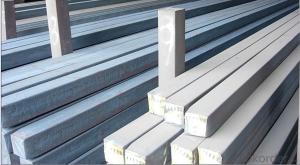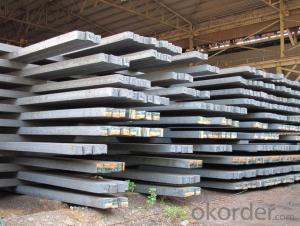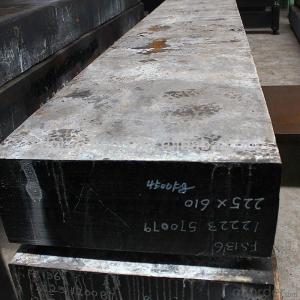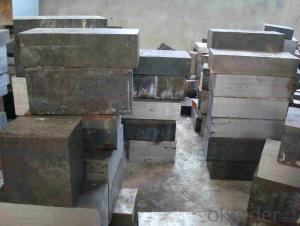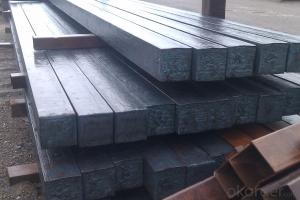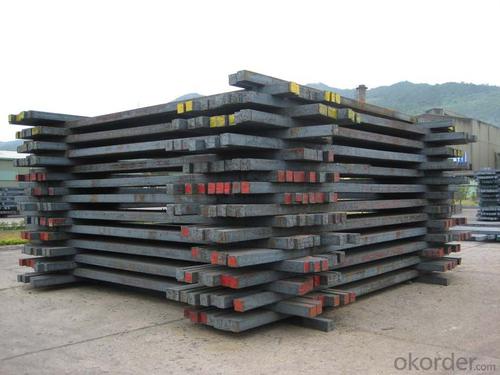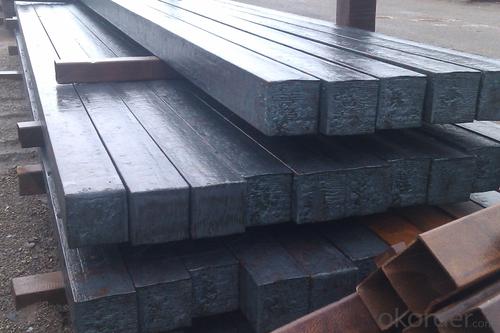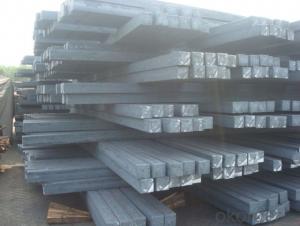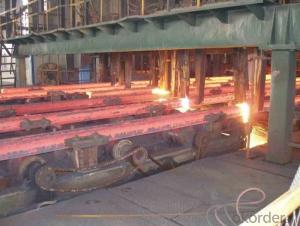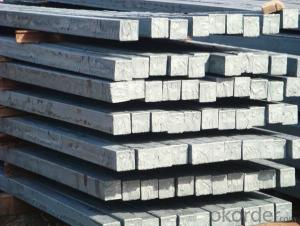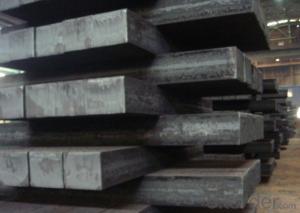Z33 BMP Rolled Steel Coil Construction Roofing Construction
- Loading Port:
- Tianjin
- Payment Terms:
- TT OR LC
- Min Order Qty:
- 100 m.t.
- Supply Capability:
- 10000 m.t./month
OKorder Service Pledge
OKorder Financial Service
You Might Also Like
Structure of Z33 BMP Rolled Steel Coil Construction Roofing Construction
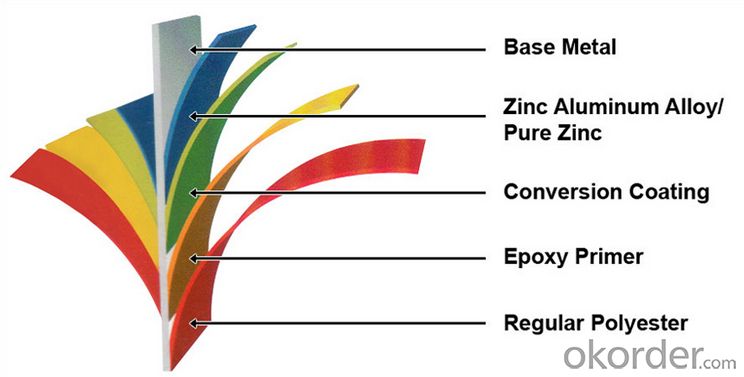
Description of Z33 BMP Rolled Steel Coil Construction Roofing Construction
PPGI is made by cold rolled steel sheet and galvanized steel sheets as baseplate, through the surface pretreatment (degreasing, cleaning, chemical conversion processing), coated by the method of continuous coatings (roller coating method),
and after roasting and cooling. Zinc coating: Z60, Z80, Z100, Z120, Z180, Z275, G30, G60, G90
Alu-zinc coating: AZ60, AZ80, AZ100, AZ120, AZ180, G30, G60, G90

Main Feature of Z33 BMP Rolled Steel Coil Construction Roofing Construction
1) Excellent corrosion resistance: The zinc layer provides a good protection of Pre-painted Galvanizeed Steel Sheet.
2) High heat resistance: The reflective surface of the material aids in efficiently reflecting the sunlight away and in turn reducing the amount of heat transmitted. The thermal reflectivity converts into energy savings.
3) Aesthetics: Pre-Painted Galvanized steel sheet is available in plethora of patterns and multiple sizes as per the requirements that given by our customers.
4) Versatility: can be used in the various areas.Standard seaworthy export packing: 3 layers of packing, inside is kraft paper, water plastic film is in the middle and outside GI steel sheet to be covered by steel strips with lock, with inner coil sleeve.
Applications of Z33 BMP Rolled Steel Coil Construction Roofing Construction
1. Construction and building: roofing; ventilating duct; handrail; partition panel;etc.
2. Electric appliance: refrigerator; washing machine; refrigerator; DVD;etc.
3.Transportation: oil tank; road sign; etc.
4.Agriculture:barn; etc.
5.Others:vending machine; game machine; etc. 
Specifications of Z33 BMP Rolled Steel Coil Construction Roofing Construction
| Classified symbol | Yield Point Minimum N/mm2 | Tensile Strength Minimum | Elongation Minimum % | Application | ||||
| N/mm2 | Nominal Thickness mm (t) | |||||||
| JIS | Yogic | 0.25-0.4 | 0.4-0.6 | 0.6-1.0 | 1.0-1.6 | |||
| G3312 | specification | |||||||
| CGCC | CGCC | -205 | -270 | -20 | -21 | -24 | -24 | Commercial |
| CGCD | CGCD | --- | 270 | --- | 27 | 31 | 32 | Drawing |
| --- | CG340 | 245 | 340 | 20 | 20 | 20 | 20 | Structural |
| CGC400 | CG400 | 295 | 400 | 16 | 17 | 18 | 18 | Structural |
| CGC440 | CG440 | 335 | 440 | 14 | 15 | 16 | 18 | Structural |
| CGC490 | CG490 | 365 | 490 | 12 | 13 | 14 | 16 | Structural |
| CGC570 | CG570 | 560 | 570 | --- | --- | --- | --- | Structural |
| ASTM Designation | Yield Point Minimum | Tensile Strength Minimum | Elongation Minimum % | Application | Q/BQB 445-2004(China standard) | ASM A653/A653M | JISG 3312 | |
| ksi(MPa) | ksi(MPa) | TDC51D+Z | (CS TYPE A+Z) | CGCC | ||||
| A653(M)-99 CS TYPE A,B,C | --- | --- | --- | Commercial | TDC52D+Z | CGCD | ||
| A653(M)-99 FS | --- | --- | --- | Lock Forming | TS250GD+Z | (G250+Z) | - | |
| A653(M)-99 DS | --- | --- | --- | Drawing | TS300GS+Z | (G300+Z) | CGC 400 | |
| A653(M)-99 SS Grade33(230) | 33(230) | 45(310) | 20 | Structural | TS350GD+Z | (G350+Z) | CGC490 | |
| A653(M)-99 SS Grade37(255) | 37(255) | 52(360) | 18 | Structural | TS550GD+Z | (G550+Z) | CGC570 | |
| A653(M)-99 SS Grade40(275) | 40(275) | 55(380) | 16 | Structural | ||||
| A653(M)-99 SS Grade50(345) | 50(345) | 65(450) | 12 | Structural | ||||
| A653(M)-99 SS Grade80(550) | 80(550) | 82(570) | --- | Structural | ||||
FAQ of Z33 BMP Rolled Steel Coil Construction Roofing Construction
We have organized several common questions for our clients,may help you sincerely:
1. How Can I Visit There?
Our company is located in Tianjin City, China, near Beijing. You can fly to Tianjin Airport Directly. All our clients, from home or aboard, are warmly welcome to visit us!
2. How Can I Get Some Sample?
We are honored to offer you sample.
3. Why choose CNBM?
1, ISO, BV, CE, SGS approved.
2, Competitive price and quality.
3, Efficient service team online for 24 hours.
4, Smooth production ability(50000tons/month) .
5, quick delivery and standard exporting package.
6, Flexible payment with T/T, L/C, Paypal, Kunlun bank, etc .
- Q: How are steel billets stored to prevent rusting?
- To prevent rusting, various measures are taken to store steel billets. Firstly, a dry and controlled environment with low humidity levels is typically utilized. This helps to minimize the presence of moisture, which is a primary catalyst for rust formation. Additionally, a protective layer such as oil or a rust inhibitor is often applied to the steel billets. This creates a barrier between the metal surface and the surrounding atmosphere, acting as a shield against moisture and oxygen. By preventing contact between these elements and the steel, rust formation is effectively hindered. Furthermore, to further reduce the risk of moisture absorption, steel billets are often stored off the ground. This is achieved by using pallets or racks to elevate the billets, allowing for proper air circulation. By doing so, the chances of condensation and subsequent rusting are greatly reduced. Regular inspection and maintenance are also vital in preventing rusting. Any signs of corrosion or damage to the protective coating should be promptly addressed to ensure the integrity of the steel billets. By implementing these storage practices, steel billets can be effectively safeguarded against rusting, ensuring their quality and usability for extended periods of time.
- Q: What is the role of steel billets in the manufacturing of pressure vessels?
- Steel billets play a crucial role in the manufacturing of pressure vessels. Pressure vessels are designed to hold and contain fluids or gases at a higher pressure than the atmospheric pressure. These vessels are used in various industries such as oil and gas, chemical, pharmaceutical, and many more. The role of steel billets in the manufacturing process is to serve as the raw material for constructing the pressure vessel. Steel billets are semi-finished products that are obtained through the continuous casting or hot rolling of steel ingots. They have a rectangular or square cross-section and are typically made from carbon steel or alloy steel. Steel billets possess several key properties that make them ideal for pressure vessel manufacturing. Firstly, they have excellent strength and toughness, which is crucial for withstanding the high internal pressure exerted by the fluids or gases inside the vessel. This ensures the structural integrity and safety of the vessel. Secondly, steel billets have good weldability, which is essential for fabricating the pressure vessel. Welding is a common joining technique used in pressure vessel manufacturing, and the weld joints must have comparable strength to the base material. Steel billets allow for strong and reliable welds to be made during the fabrication process. Moreover, steel billets can be easily formed and shaped into the desired size and dimensions required for the pressure vessel. They can be forged, rolled, or extruded to create the necessary components of the vessel, such as the cylindrical body, heads, nozzles, and flanges. This versatility in shaping allows for customization based on the specific requirements of the pressure vessel. Furthermore, steel billets are known for their corrosion resistance, which is important for pressure vessels that come into contact with corrosive fluids or gases. The selection of the appropriate steel grade for the billets ensures that the pressure vessel can withstand the corrosive environment and maintain its integrity over time. In conclusion, steel billets are essential in the manufacturing of pressure vessels as they provide the raw material with the necessary properties to withstand high-pressure conditions. Their strength, weldability, formability, and corrosion resistance make them an ideal choice for constructing reliable and durable pressure vessels used in various industries.
- Q: How are steel billets used in the manufacturing of oil and gas components?
- Steel billets are an essential material used in the manufacturing of oil and gas components. These billets are semi-finished products that are typically made through a process called casting, where molten steel is poured into a mold and allowed to solidify into a rectangular shape. Once the steel billets are formed, they are used in various ways to produce components for the oil and gas industry. One common application is in the production of pipes, which are crucial for transporting oil and gas from the reservoirs to the processing facilities or end-users. Steel billets can be further processed to create seamless or welded pipes, depending on the specific requirements of the project. In addition to pipes, steel billets are also used to manufacture other oil and gas components such as valves, fittings, flanges, and pressure vessels. These components are vital for the safe and efficient operation of oil and gas facilities, as they ensure proper flow control, connection, and containment of fluids under high pressures and temperatures. The use of steel billets in the manufacturing of oil and gas components offers several advantages. Firstly, steel is known for its strength, durability, and resistance to corrosion, making it well-suited for the harsh and demanding operating conditions of the oil and gas industry. Additionally, steel billets allow for flexibility in terms of size, shape, and composition, which enables manufacturers to produce components that meet specific project requirements. Overall, steel billets play a critical role in the production of oil and gas components, providing the necessary strength, durability, and versatility required for the safe and efficient operation of the industry.
- Q: What is the maximum temperature that a steel billet can withstand?
- The maximum temperature that a steel billet can withstand depends on the specific type of steel and its composition. However, as a general rule, most steel billets can withstand temperatures up to around 1,300 to 1,500 degrees Celsius (2,372 to 2,732 degrees Fahrenheit) before experiencing significant structural changes or damage.
- Q: Are steel billets recyclable?
- Yes, steel billets are recyclable. Steel is one of the most recycled materials in the world, and the process of recycling steel billets is well-established and highly efficient. When steel billets reach the end of their useful life, they can be melted down and reused to produce new steel products. This recycling process helps to conserve natural resources, reduce energy consumption, and minimize environmental impact. Additionally, recycling steel billets also helps to reduce the amount of waste sent to landfills and contributes to the circular economy by promoting the sustainable use of resources.
- Q: Is the reaction of carbon and carbon dioxide a redox reaction?
- The reaction of carbon and carbon dioxide is redox reaction.Turn left and turn right |Oxidation reduction reaction is a kind of reaction that changes the number of oxidation of elements before and after chemical reaction. The essence of redox reaction is the gain or loss of electrons or the offset of common electron pairs. The oxidation number of the element changes before and after the redox reaction.
- Q: What is the role of steel billets in the manufacturing of automotive suspension systems?
- Steel billets play a crucial role in the manufacturing of automotive suspension systems as they serve as the raw material for producing various components like springs, shock absorbers, and control arms. These billets are heated, shaped, and machined to create strong and durable suspension parts that can withstand the forces and vibrations encountered while driving. Overall, steel billets are essential in ensuring the structural integrity and performance of automotive suspension systems.
- Q: How do steel billets contribute to the manufacturing of medical equipment?
- Steel billets are a crucial component in the manufacturing of medical equipment as they are used to create various parts and components, such as surgical instruments, implants, and medical devices. The high-strength and durability of steel make it ideal for ensuring the reliability and longevity of these critical medical tools. Additionally, steel billets can be easily molded and shaped into the desired form, allowing manufacturers to create intricate and precise designs necessary for medical equipment.
- Q: How are steel billets used in the production of shipbuilding materials?
- Steel billets are used in the production of shipbuilding materials as they serve as the primary raw material for shaping and forming various components such as hulls, frames, and beams. These billets are heated and then shaped through processes like rolling or forging to create the desired shapes and sizes required for ship construction. The high strength and durability of steel make it an ideal material for shipbuilding, ensuring the structural integrity and safety of the vessels.
- Q: How are steel billets used in the energy and power generation industry?
- Due to their strength, durability, and versatility, steel billets are essential in the energy and power generation industry. These cylindrical castings of steel find various applications within this industry. One way steel billets are primarily used in the energy and power generation industry is for constructing power plants and infrastructure. They are commonly employed in manufacturing heavy-duty equipment, such as turbines, generators, and boilers, which are crucial for converting different energy sources into electricity. The high strength and resilience of steel billets guarantee that these structures can endure harsh operational conditions and maintain their integrity for an extended period. Apart from power plant construction, steel billets are also utilized in manufacturing transmission and distribution systems. These systems, including power lines, transformers, and substations, require sturdy materials to ensure efficient electricity transmission and distribution. Steel billets are often used to produce the poles, towers, and other structural components that form the backbone of these systems, guaranteeing reliability and long-term functionality. Furthermore, steel billets find application in manufacturing equipment used for renewable energy generation. For example, in wind energy, billets are used to manufacture the towers on which wind turbines are mounted. These towers must withstand wind forces and support the weight of the turbine, and steel billets provide the necessary strength and stability for this purpose. Additionally, steel billets are employed in fabricating equipment for oil and gas exploration, extraction, and refining. In this industry, billets are used to produce pipes, valves, and other components that are vital for transporting and processing petroleum and natural gas. The robustness of steel billets ensures the integrity and safety of these systems, even in demanding conditions like high-pressure and high-temperature environments. In conclusion, steel billets play a vital role in the energy and power generation industry as they serve as the fundamental building blocks for constructing power plants, transmission systems, renewable energy infrastructure, and oil and gas facilities. Their strength, durability, and versatility make them an indispensable material for ensuring the reliability, efficiency, and safety of these critical energy systems.
Send your message to us
Z33 BMP Rolled Steel Coil Construction Roofing Construction
- Loading Port:
- Tianjin
- Payment Terms:
- TT OR LC
- Min Order Qty:
- 100 m.t.
- Supply Capability:
- 10000 m.t./month
OKorder Service Pledge
OKorder Financial Service
Similar products
Hot products
Hot Searches
Related keywords
